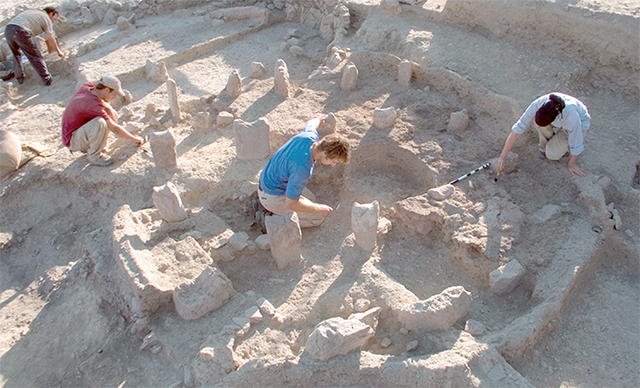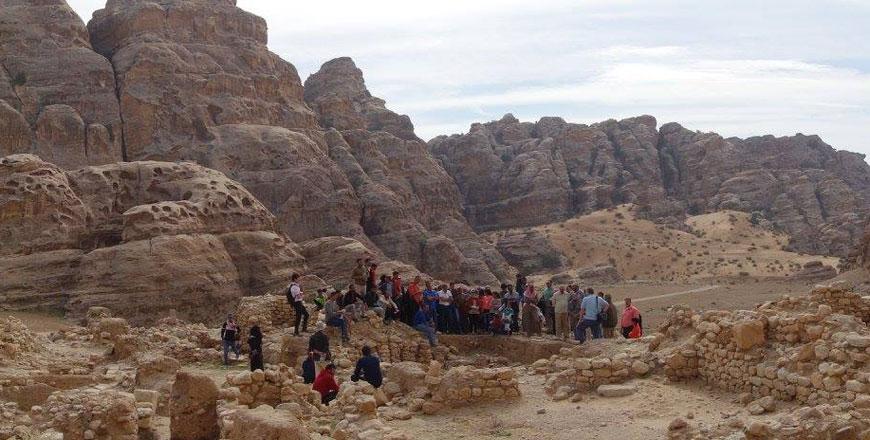You are here
British scholar explores forgotten rural heritage of Jordan’s villages
By Saeb Rawashdeh - Oct 19,2017 - Last updated at Oct 21,2017

Carol Palmer
AMMAN — The lecture “Villages on the Edge: Whither the Rural Heritage of Jordan?” held on Monday at the British Institute in Amman (BIA) explored the historical position of Jordan between the “desert and the sown” and the merging of sedentary and nomadic ways of life.
“The aim of this lecture is to highlight and reflect upon the status of recent rural heritage in the territory of modern Jordan post-1750,” Director of the BIA Carol Palmer said, adding that this constitutes the period covering the late Ottoman times through the Arab Revolt and the British mandate, and after Jordanian independence in 1946.
“While the work of the Jordanian Department of Antiquities is to protect the national heritage pre-1750, heritage after 1750 has no overarching body to govern it,” she stated, adding that the lecture would focus in particular on the village of Ma’tan in Tafileh Governorate.
Heritage conservation from any historical period is always a question of values: people do not conserve what they do not value, Palmer claimed, highlighting that “rural heritage” has the advantage of offering great authenticity and a people-centred approach to heritage conservation as it is the immediate heritage of the people of Jordan.
“The basic questions, though, do remain: what should be preserved, what to lose, and how to preserve it?” Palmer asked.
One of the key features of the modern period is the shift from rural to urban contexts, along with the decline in agricultural pastoralism as an economically viable way of life for small scale operators, the director explained, stressing that this is fostered by the relative lack of modern services and opportunity in rural areas and the population growth.
“As a consequence, in Jordan, the region, and more broadly in the Mediterranean, old villages continue to be absorbed and developed into urban conurbations along with their lands,” she claimed, adding that “some other villages, located away from major roads and people, fall into decay”.
Palmer, who has been working with a group from the Bournemouth University on the INEA project, said: “We just started publishing some of our works which is a scientific ethno-archaeological approach. We are interested in what archaeologist call ‘activity areas’. We are doing it with the aim to understand how people lived in much deeper past, particularly in the Neolithic.”
The location of Ma’tan is a typical example of a village which is picturesque and spectacularly located below the plateau and along the springs in the Jordanian countryside, Palmer continued.
“What’s typical about the houses is that their original form was one room, with arches inside where people lived and stored food,” she said.
“There are sleeping platforms, under which people stored grain, and a place or poles where they used to hang the tent, because these houses were normally used only in the winter and inhabitants left them in spring and summer to take goats and sheep to graze,” Palmer said.
The old houses also have no windows but instead openings above the doors which are made from stone and mud, she explained, noting that the roofs, which were thick and heavy, were the major feature of these houses along with the internal arches.
“In this area, they use juniper, followed by the layer of reeds, followed by the layer of bilan [thorny burnet], soil and they top it with mud-plaster [locally called samaga],” Palmer explained.
According to Palmer, people who live in these villages are neither fully bedouin nor farmers, but rather in between.
The INEA project team is seeking to record this heritage through a scientific ethno-archaeological approach, as well as by identifying activities and people’s ways of life, Palmer highlighted.
These “villages on the edge” started to be abandoned in the 1950s and 1960s, and are now falling apart, so there is a real question about what to do with them, she pointed out.
“I call rural any place where you can grow crops,” she continued, adding that there is a law [issued in 2005] in Jordan for the protection of heritage post-1750, but numerous problems regarding implementation, guidelines and trained conservators persist.
“One of the ideas was to devolve implementation of the law to local municipalities. Because this type of heritage is best managed locally,” Palmer suggested.
“We need to think about how to balance environment and culture because many landscapes are not natural but also involve the cultural management,” she underlined.
Related Articles
AMMAN — The study of modern society and modern people can help answer archaeological questions, according to British scholar Sarah Elliott.“
A Neolithic village Dhra is located at the southern end of the Dead Sea area, near Wadi Karak, in southern Jordan.
AMMAN — In its current form, education in the Kingdom does not nurture the relationship between students and “the place”, which is partly to














